
Some very deft thieves managed to outwit guards, evade alarms, and skirt security cameras at the Manchester Whitworth Gallery in April 2003 to swipe Paul Gauguin’s Tahitian Landscape, Vincent van Gogh’s Fortifications, and Pablo Picasso’s Poverty. Though police assumed the criminals made off with the works, valued at approximately $8 million, they were pleasantly surprised to see the famed artwork jammed into a cardboard tube behind a toilet in a public restroom less than a quarter mile from the gallery. The thieves had attached a handwritten note that read: “We didn't intend to steal these paintings, just to highlight the woeful security.” While authorities assumed the suspects had less noble intentions and simply realized that it’d be impossible to resell the works, Whitworth did heed their warning and up its security. “I think that the psychology of this theft shows somebody had a grudge against the institution or certain people in the institution,” Whitworth director Alistair Smith told the BBC.
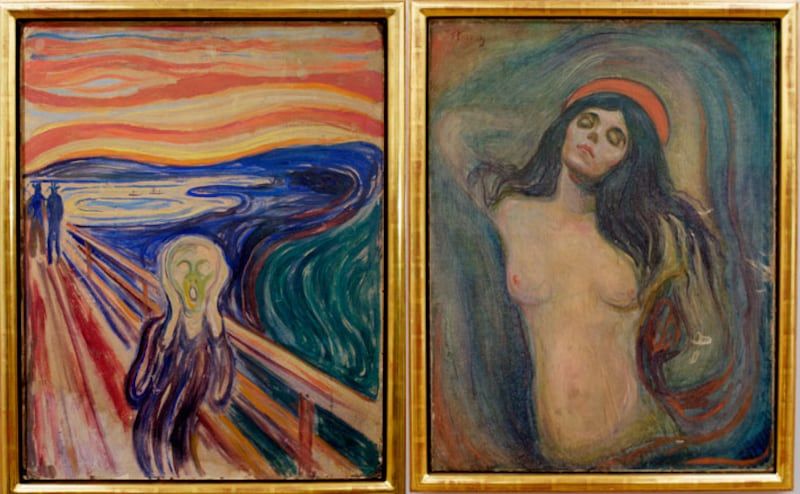
The threatening image featured in Edvard Munch’s renowned expressionist work The Scream did not deter thieves from taking it—twice. In February 1994, on the day that year’s Winter Olympics began in Norway, four men broke into the National Gallery and stole its version (Munch painted four), leaving behind a note the read, “Thanks for the poor security.” Though the gallery refused to pay a $1 million ransom demand, Norwegian police joined forces with British police and the Getty Museum to arrange a sting operation to recover the famous painting. Three months after it was taken, the painting was returned undamaged and two years later, four men were convicted in connection with the crime. But in one morning in August 2004, two masked gunmen barged into the Munch Museum in Oslo, threatened a female security guard, and escaped in a getaway car with the work, as well as the artist’s painting Madonna, valued at approximately $75 million. In 2006, three men were convicted and the paintings were recovered with minimal damage. “I am almost crying from happiness," said Gro Balas, who chaired the board of the Munch Museum, which reportedly closed for approximately 10 months to undergo a $6 million security overhaul.
Stian Lysberg Solum / AP Photo (2)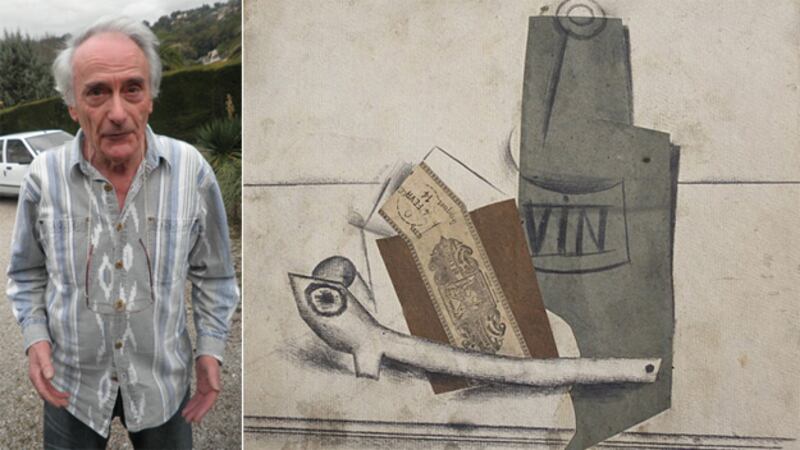
People were shocked when French electrician Pierre Le Guennec revealed he was allegedly given the collection in exchange for work he did for the artist. But with 271 different Pablo Picasso paintings, watercolors, and sketchbooks, authorities and the artist’s son, Claude Picasso, are suspicious because it’s valued at nearly $80 million and the artist rarely gave away his work. The electrician, who worked for Picasso as well as his wife, Jacqueline Roque, told several stories to the media regarding how he obtained the artwork. For now, the French government has seized Guennec’s cache pending an investigation.
AP Photos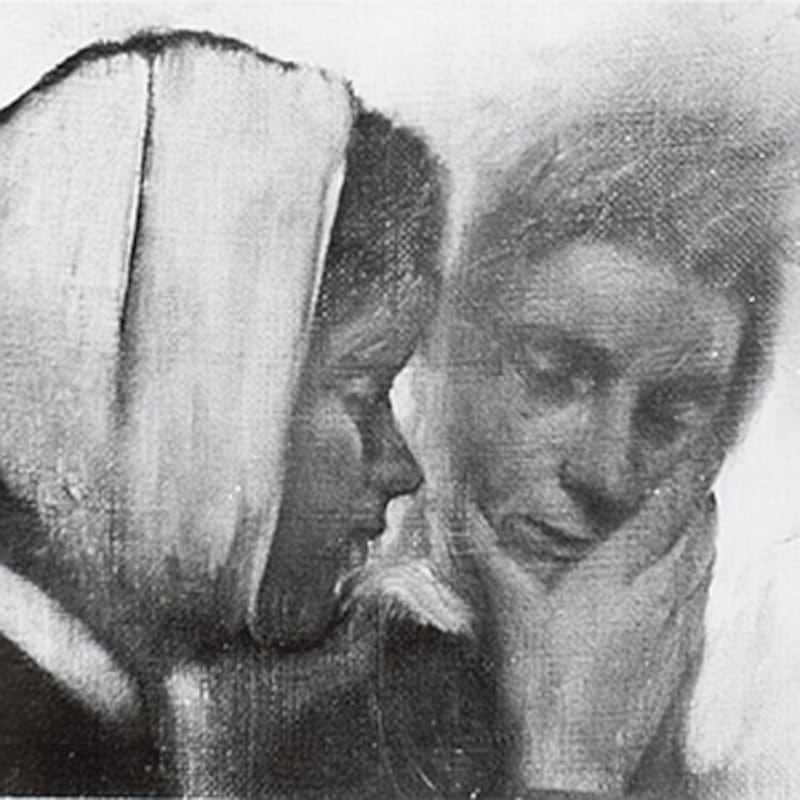
Just like something out of The Thomas Crown Affair. In 1973, a rare Degas painting titled Blanchisseuses souffrant des dent, was stolen from the Malraux Museum in Le Havre, France. The French government loaned the painting from the Louvre collection to the museum, but it was stolen and never returned until it popped up in a Sotheby’s auction last month. The auction house valued the painting at $350,000 and $450,000, before it was reported to Interpol and sent back to France. The owner claimed his father gave him the painting and he was unaware that it was stolen.
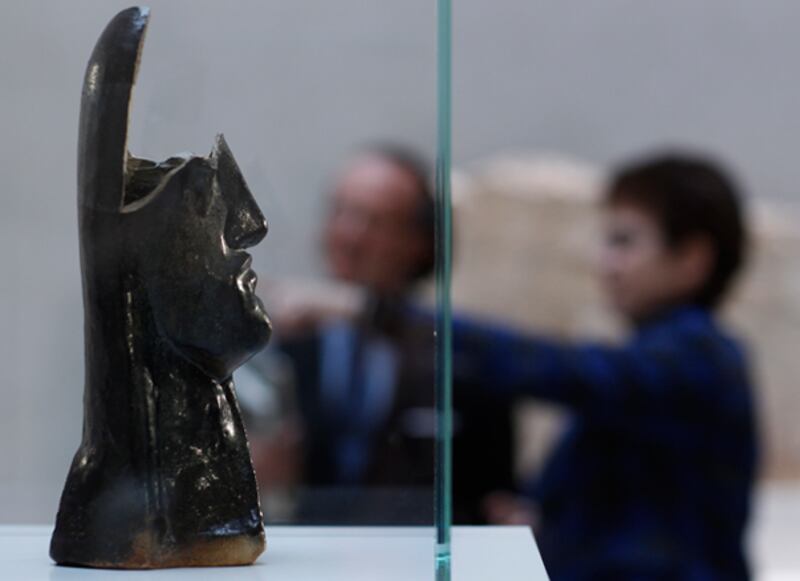
During an excavation for a new subway system in Berlin, construction workers uncovered 11 sculptures by the likes of Edwin Scharff and Otto Baum that were originally classified as “degenerate art” by the Nazis. During World War II, the Nazis confiscated thousand of pieces of artwork that went against their rigid aesthetic principles. The sculptures are said to have been kept by a stockbroker who rented the building during the war, and also aided the Jews. The pieces were cleaned and put on display at the Neues Museum in Berlin.
Thomas Peter / Reuters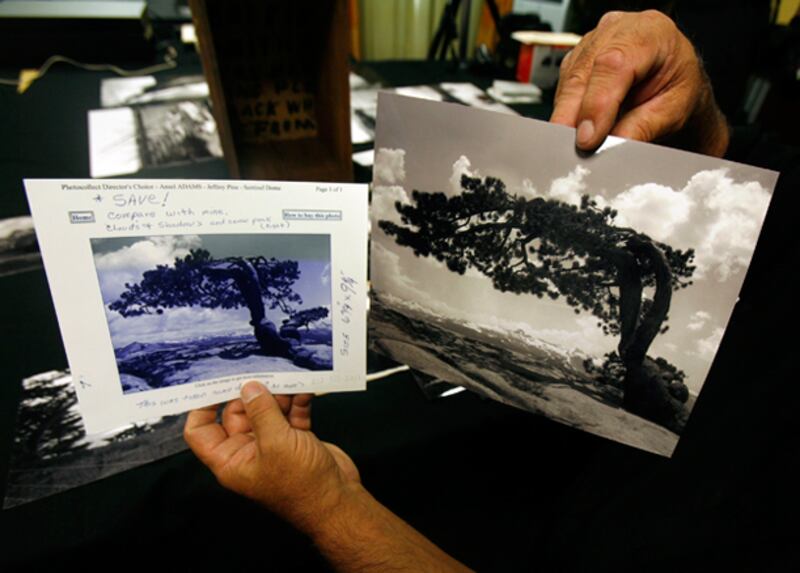
At a garage sale, California collector Rick Norsigian bought a box of film negatives for $45. Turns out the negatives, which he purchased nearly a decade ago, may belong to famed landscape photographer Ansel Adams, and would be valued at nearly $200 million. But what once made Norsigian a millionaire could now make him a liar. An 87-year-old woman claims that the negatives belong to her grandfather Arthur C. Pillsbury. And since then, the panel of art and history experts who once signed off on the negatives as Adams’ originals are now backing down on their claims.
Paul Zamora, Fresno Bee / Newscom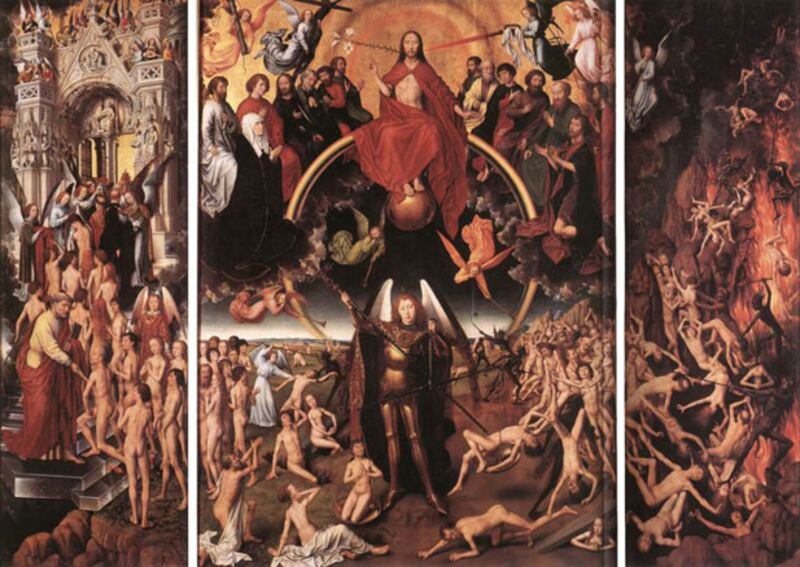
The Early Netherlandish painter Hans Memling’s Last Judgment is considered one of the first major art thefts of the Renaissance. In 1473, two panels of the altarpiece were moving from the Netherlands to the Medicis in Florence via ship. Pirates attacked and took the work with them to the Gdansk Cathedral in Poland. Memling’s painting then took up permanent residence in its new Polish home.
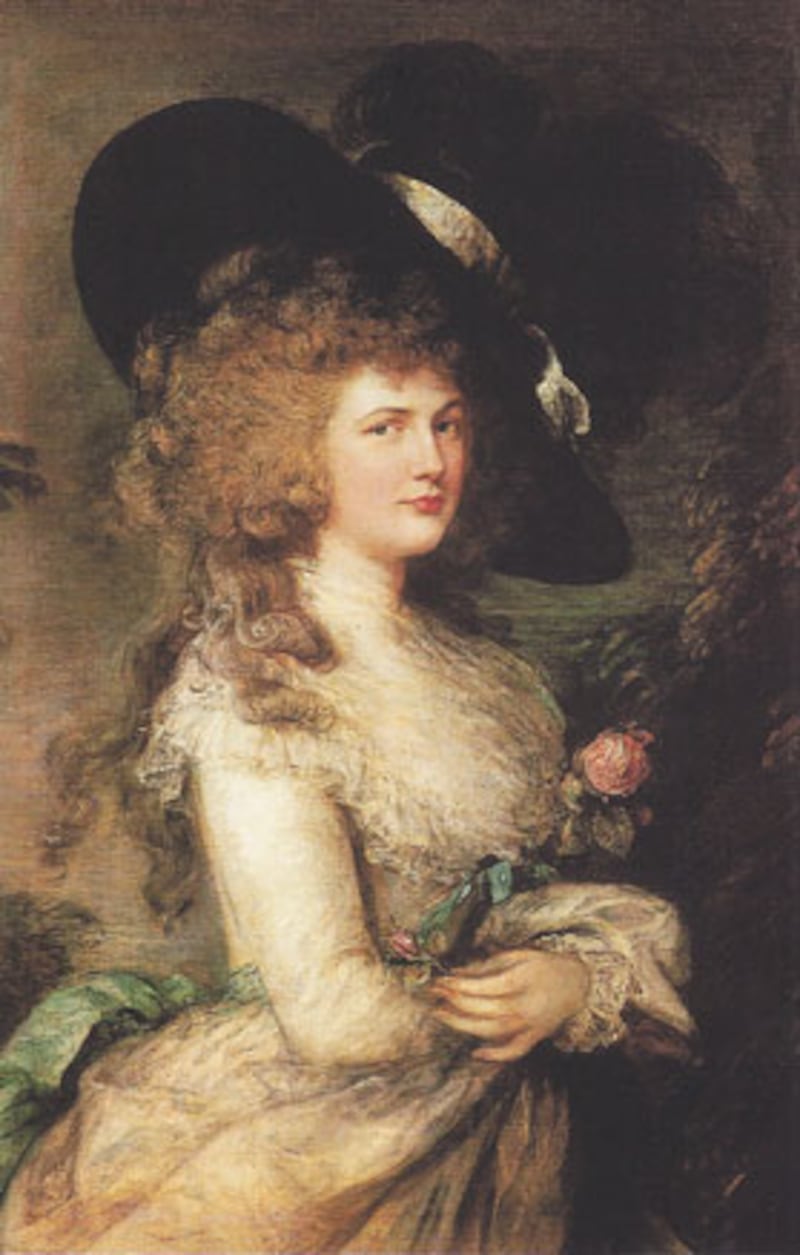
The theft of the English painter Thomas Gainsborough’s Duchess of Devonshire had a remarkable literary afterlife. In 1876, Adam Worth stole the18th-century portrait of the duchess, an ancestor of Princess Diana, in order to secure enough money to bail his brother out of jail. Finding that his brother had already been freed, Worth kept the canvas. Later known as the “Napoleon of Crime,” Worth became the model for the nemesis to Sherlock Holmes in Sir Arthur Conan Doyle’s detective series. Adding to the painting’s lore is its attachment to American financier J.P. Morgan, who purchased the previously stolen work, believing it to be an original, only to discover that it was, in fact, a copy made by the artist.
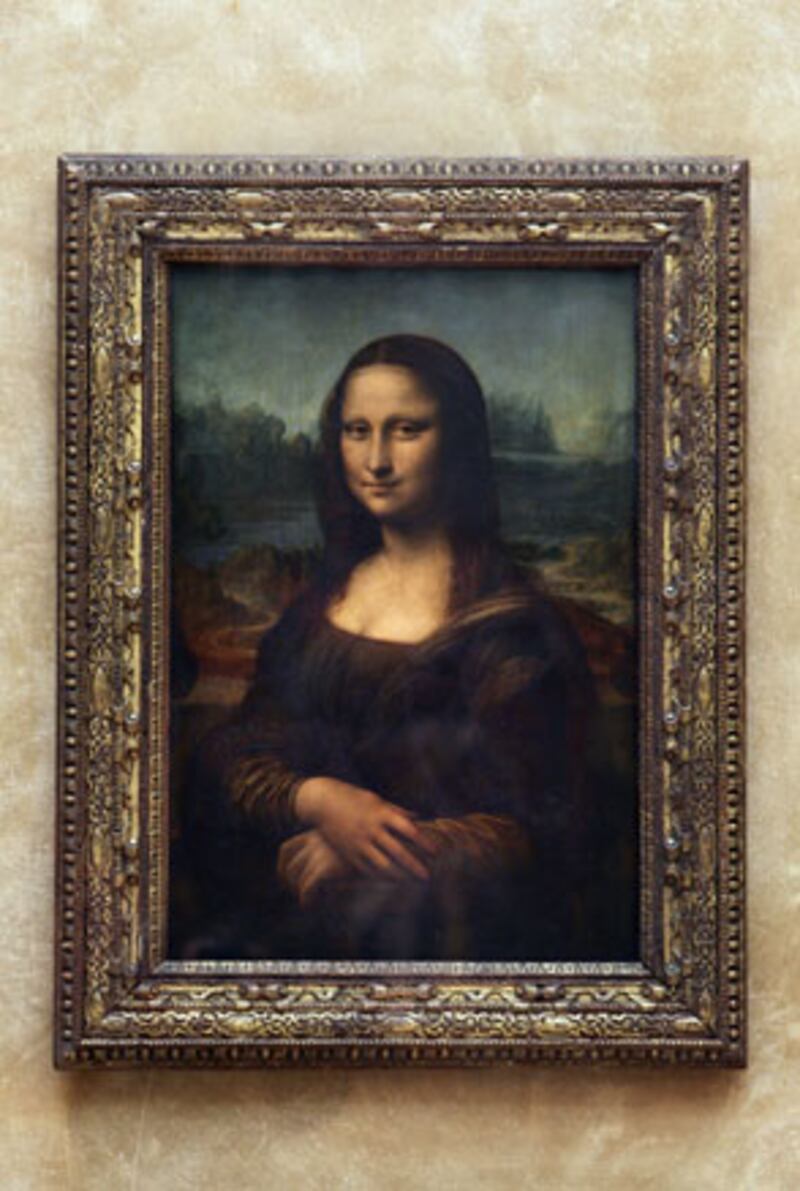
Owned by French royalty and Napoleon Bonaparte, Italian master Leonardo da Vinci’s Mona Lisa had an incredible lineage. By 1911, the famous lady with the mysterious smile had earned a place of honor in Paris’ Louvre museum. On August 20, 1911, she disappeared. Like the recent theft in Paris, this one caused a great shock. Both the poet Guillaume Apollinaire and artist Pablo Picasso were caught in the investigators’ snare—both were eventually let go. Soon, an Italian, Vincenzo Perugia, was caught in Florence trying to sell the painting to an antiques dealer. Mona Lisa was returned to the Louvre. And although he was jailed, Perugia was hailed as a national hero in Italy for trying to repatriate the Italian treasure.
Jean-Pierre Muller, AFP / Getty Images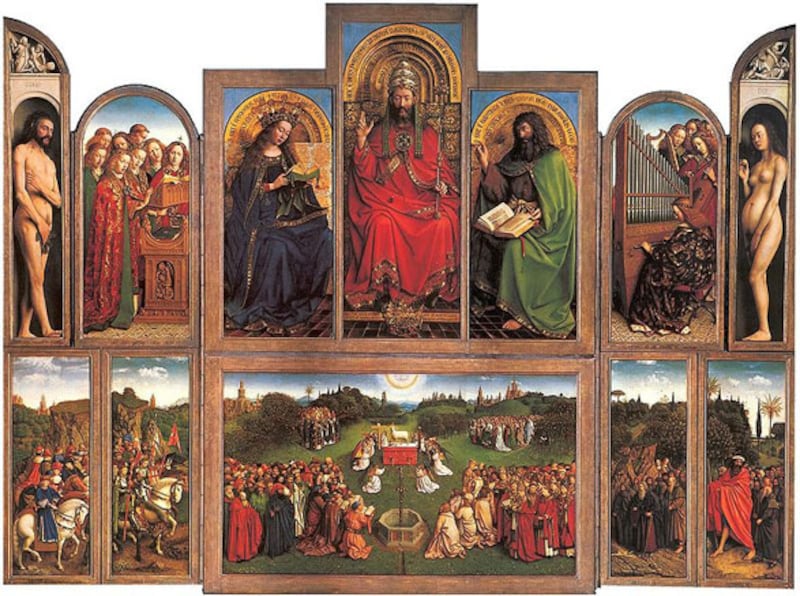
The Ghent Altarpiece, completed by Hubert and Jan van Eyck in 1432, seems to have some kind of wanderlust. Its history is troubled by thefts—and Nazis!—although its most famous move came in 1934, when thieves took two of its panels from the St. Bavo Cathedral in Ghent, Belgium. One of the panels was recovered, but one remains missing to this day. The presumed thief, Arsene Goedertier, revealed in extremis that he knew the missing masterpiece’s location, but he died with the secret. The affair, along with its many ransom notes, is cataloged here. Today, the Getty Foundation is providing funds for its restoration.
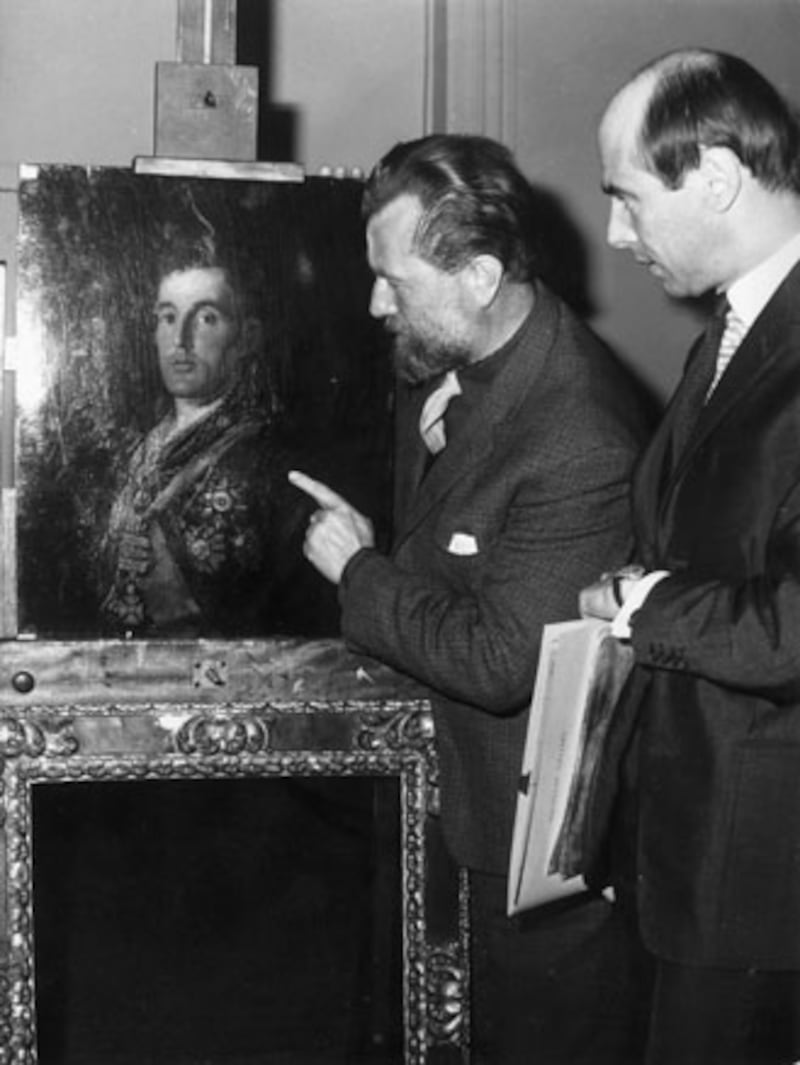
The Old Master Goya’s 1812 portrait of the Duke of Wellington was supposedly nabbed by a bus driver named Kempton Bunton in 1961. The story goes that Bunton was turned on to the idea of stealing the work when he heard the amount that the British government was about to make through its sale. After climbing through a window, Bunton is said to have walked out of the National Gallery with the duke under his arm. He then allegedly tried to ransom the painting back to the museum. Three years later, Bunton returned the painting. Bunton only spent three months in jail as his lawyers were able to convince the court that their client only wanted the painting’s frame. After all that, according to the BBC, the National Gallery released papers in 1996 pointing to Bunton’s innocence.
Douglas Miller, Keystone / Getty Images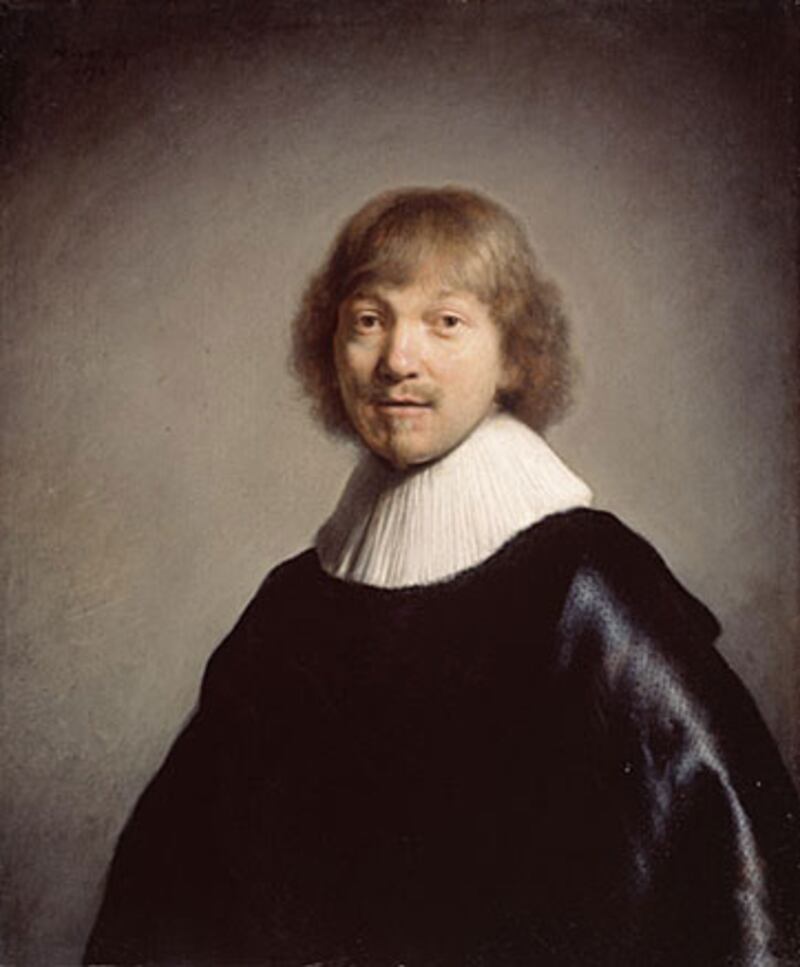
This seemingly simple Rembrandt can’t seem to stay on the walls of any museum for too long. Over the years it has been stolen four separate times, most recently in 1966. An easily pocketed 11.8 by 9.8 inches, the now-notorious painting has managed to stay put at the Dulwich Picture Gallery in London.
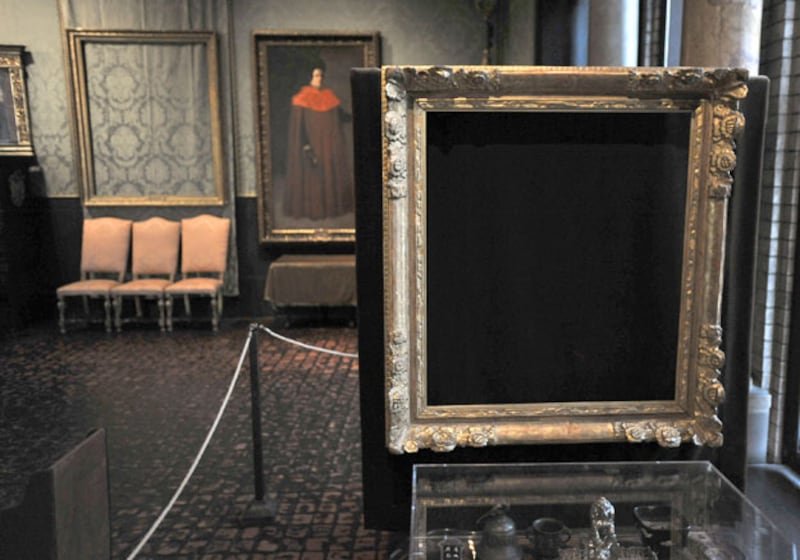
The largest art theft on record, a 1990 robbery at Boston’s Isabella Stewart Gardner Museum claimed 13 paintings worth an estimated $300 million. The thieves—who have never been caught—reportedly posed as police officers before making off with a haul that included some of the museum's most famous works: five Degas drawings, three Rembrandts (including his only seascape), Vermeer’s The Concert, and Manet’s Chez Tortoni. The thieves appear to have planned haphazardly for the heist, smashing frames and knocking the works out of their settings, but 20 years later officials continue to be baffled about who did it.
Josh Reynolds / AP Photo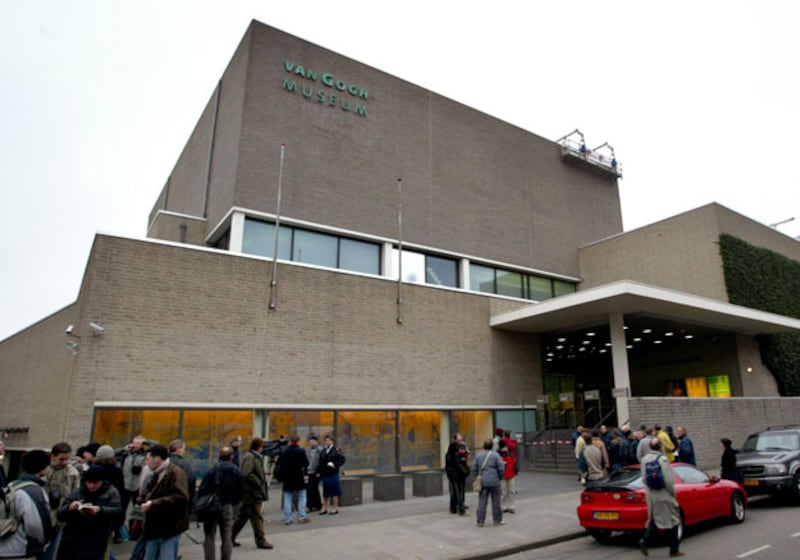
Notorious to Dutch police as " The Monkey" for the ease with which he evaded capture, Octave Durham and sidekick Henk B smashed a window of the Van Gogh Museum in Amsterdam, climbed in with a ladder, and snatched two early Van Goghs: Congregation Leaving the Reformed Church in Nuenen and View of the Sea at Scheveningen. The duo was able to flee the scene before police arrived. Although they were eventually convicted for their 2002 heist, the works, valued at about $3 million, were never recovered.
Toussaint Kluiters, AFP / Getty Images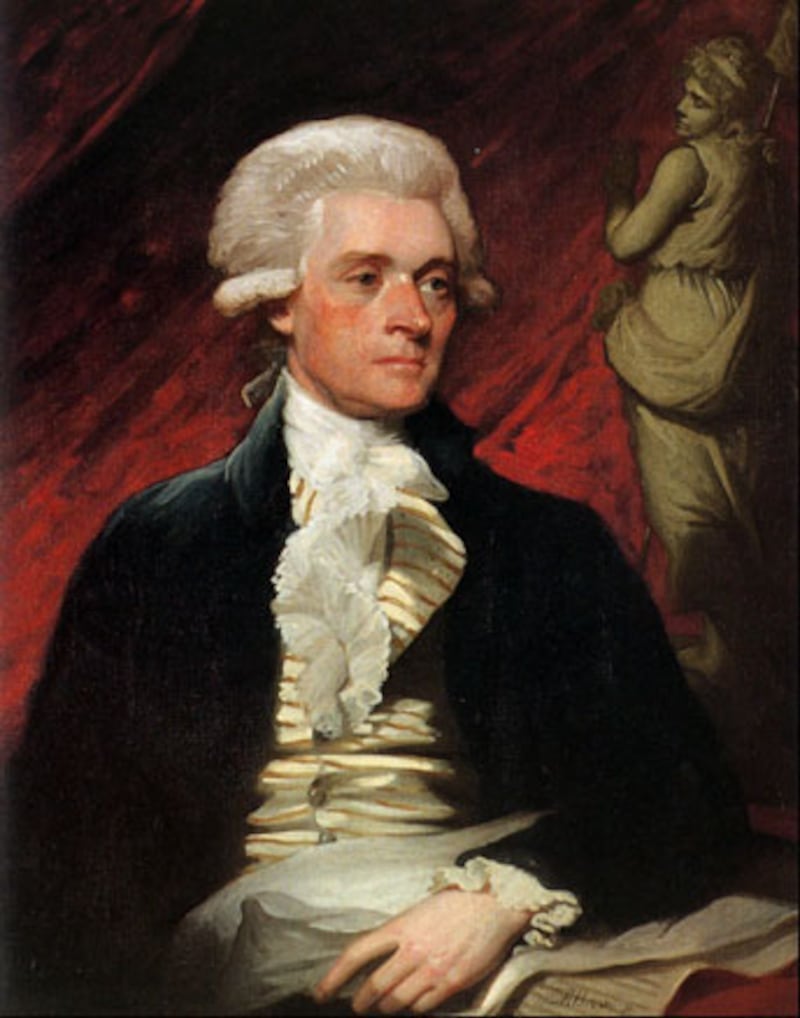
Apparently sometimes even a safe isn’t enough to prevent theft: In 1994, Mather Brown’s famous 1786 portrait of Thomas Jefferson was stolen while on loan to Polaroid for reproduction. The safe holding the $1 million-$3 million portrait had been opened with a hammer and chisel, according to reports, and was in a storage area with no alarms or security guards. The painting was recovered in 1996 after a rigorous two-year FBI investigation. Officials declined to release further details of the search.
AP Photo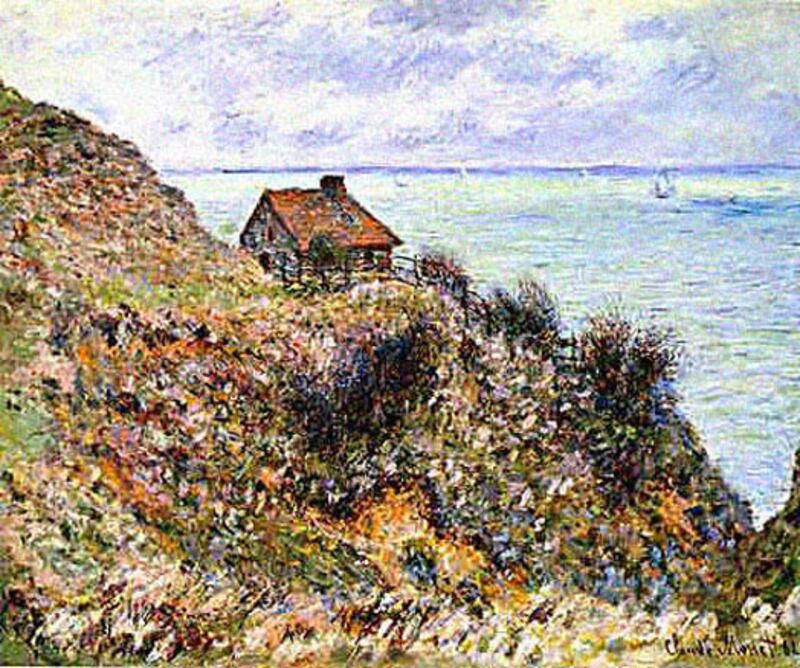
Los Angeles eye doctor Steven Cooperman had built a promising collection of art, including works by Picasso and Monet. In 1992, two works went missing from his home, only to show up in a storage locker in Cleveland five years later. By 1998, Cooperman was in court, facing charges that he faked the robbery in order to cash in on a $17.5 million insurance scam. Cooperman was convicted. He surfaced in the courts again in a case against a New York law firm accused of paying illegal kickbacks to gin up class-action lawsuits. He pleaded guilty to those charges.
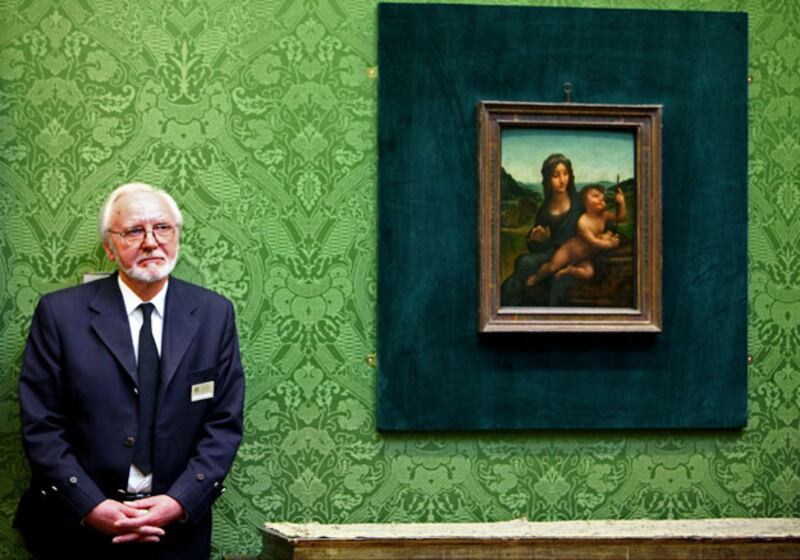
The theft of da Vinci’s Madonna With the Yarnwinder in 2003 has earned a spot on the FBI’s “ Top Ten Art Crimes” list. Four thieves were able to overpower a tour guide in Scotland’s Drumlanrig Castle and take off with the masterpiece. In 2007, the painting was found in the office of a Scottish lawyer. The work became evidence in the case against drug lords who were accused of using it to raise cash to fund a drug deal. Just this month, conspiracy charges were dropped against George Allan Short, a convicted cocaine smuggler.
Jeff J Mitchell / Getty Images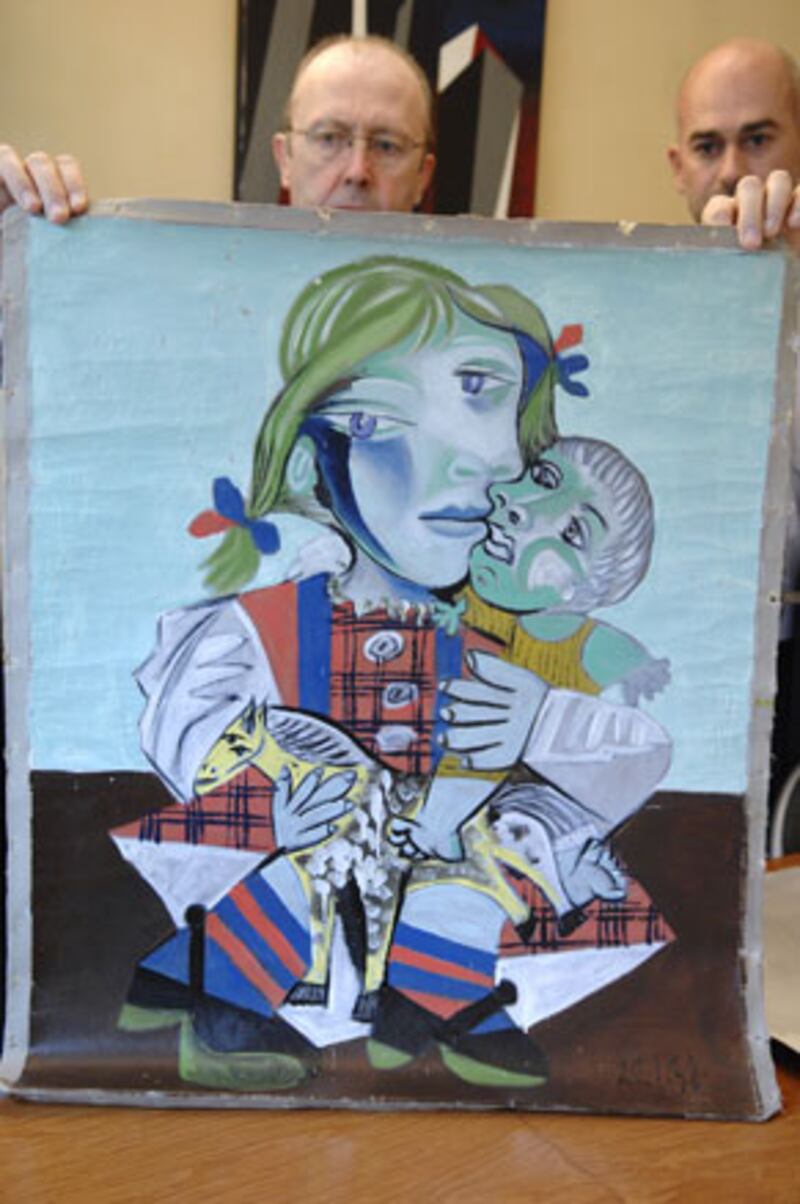
Robbery got personal in February 2007 when two Pablo Picasso works, Maya with Doll and Jacqueline were stolen from the legendary Cubist’s granddaughter’s home in Paris. While the descendant, Diana Widmaier-Picasso, and her mother were sleeping, seemingly professional burglars broke into the upscale abode in the Seventh Arrondissement and took the 1938 work of his daughter as a child and 1961 painting of his second wife, valued at approximately $66 million total. In August, after more than a month of surveillance, The Independent reported, investigators moved in on the suspects as they were transporting the rolled-up Picassos. The Spanish master’s works, as well as his sketchbook, were recovered through a sting operation and three people were taken into custody for the theft.
Eric Feferberg, AFP / Getty Images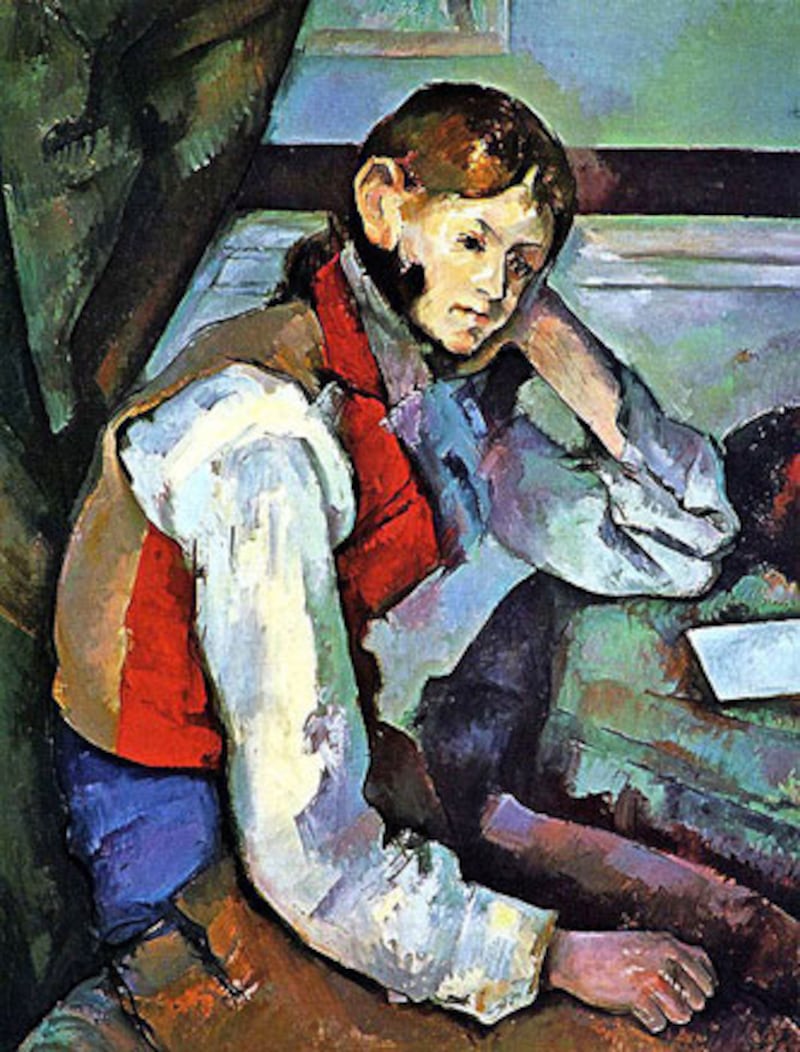
In February 2008, three armed men stormed into the small Emile Bührle Foundation museum in Zurich, taking four paintings off with them. Two of the paintings—one by van Gogh and another by Monet—were recovered and put on display this winter. A work by Cezanne, The Boy in the Red Vest, which is valued at nearly $100 million, is still missing. Another painting by Degas is still at large.
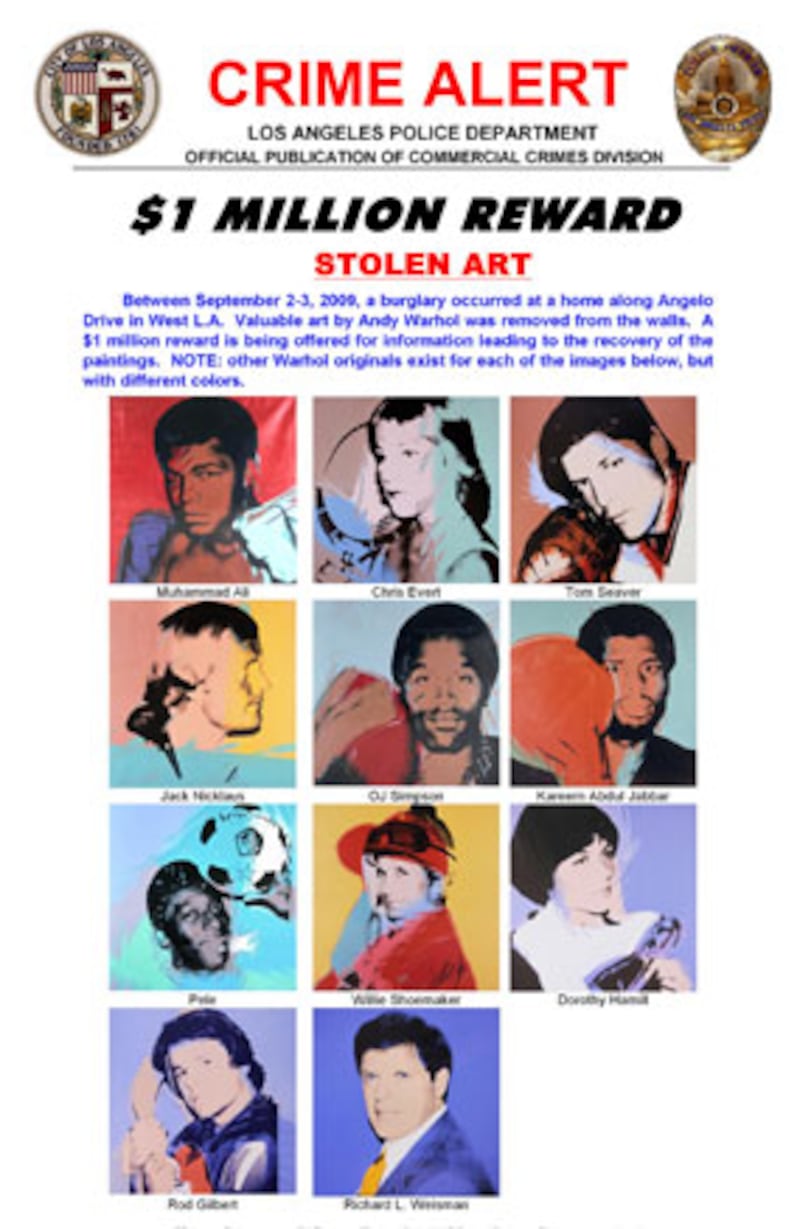
Eleven Andy Warhol silkscreen portraits were taken from the Los Angeles home of collector Richard Weisman in September 2009. Weisman, an investment banker, befriended the painter in the 1970s and commissioned the series, which includes paintings of Muhammad Ali and O.J. Simpson. In 2002, Weisman tried to sell the collection for $3 million. “This is a huge deal,” one art expert said at the time. “You’re talking about a major collector who has lost a significant amount of important art.”
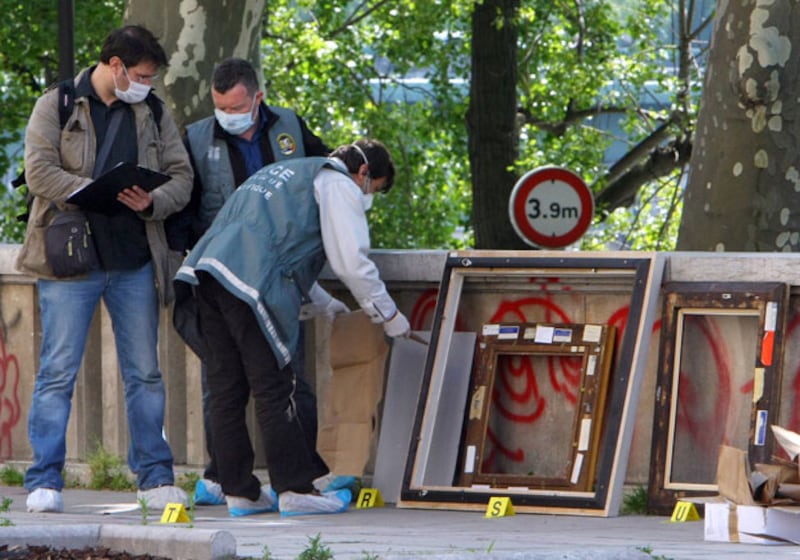
A bold, masked thief entered Paris’ Museum of Modern Art at night through a broken window Wednesday and came out with art valued at an estimated $630 million from Picasso, Matisse, and other contemporary masters, The Telegraph reported. A source close to the investigation called the crime “one of the biggest in art history,” noting that Picasso’s Pigeon with Green Peas, Henri Matisse’s Pastorale, Georges Braque’s Olive Tree Near l’Estaque, Amédéo Modigliani’s The Woman with the Fan, and Fernand Léger’s Still Life With Candlesticks are all missing. The break-in was discovered after museum officials noticed the smashed window and broken padlock. “This is a serious crime to the heritage of humanity," Christophe Girard, deputy culture secretary at the Paris Town Hall, said. Hopefully, like most of the paintings that have gone before it, this quintet will also be recovered.
Jacques Brinon / AP Photo




